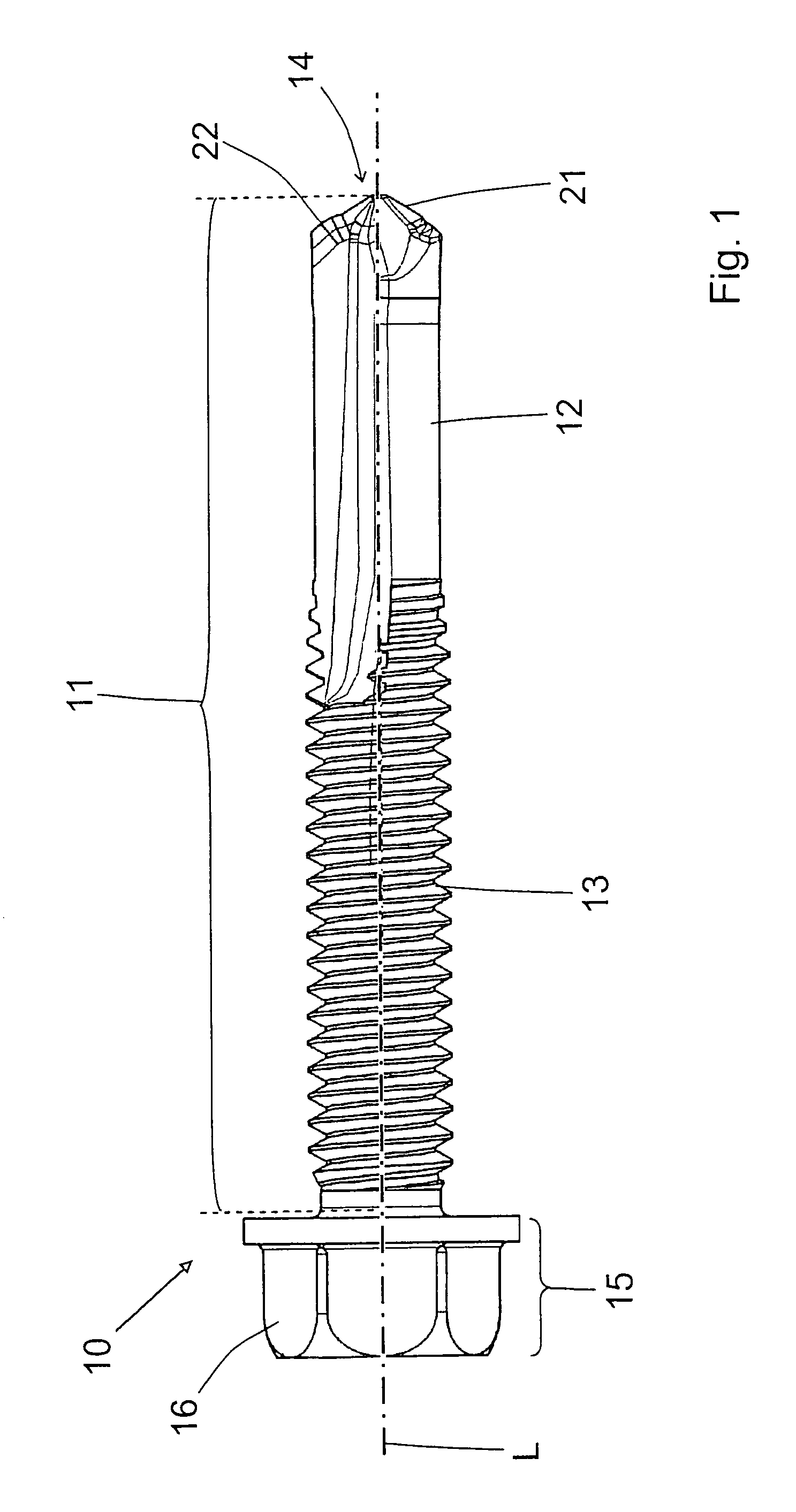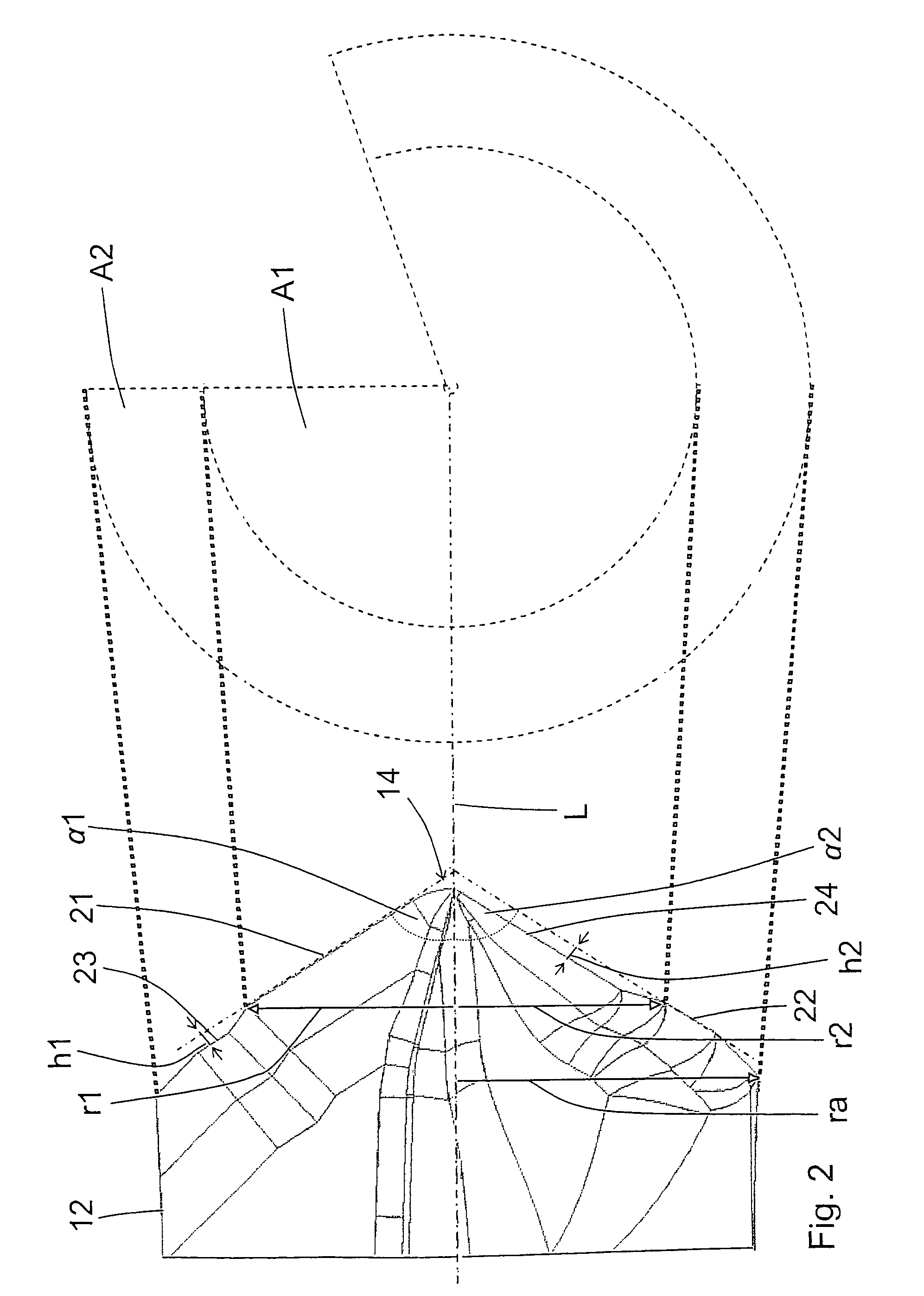Self-drilling screw
a self-drilling screw and screw body technology, applied in the direction of threaded fasteners, screws, fastening means, etc., can solve the problems of reduced failure rate, small heat generation, and small wear of self-drilling screws, so as to improve the cutting depth, the effect of reducing the failure ra
- Summary
- Abstract
- Description
- Claims
- Application Information
AI Technical Summary
Benefits of technology
Problems solved by technology
Method used
Image
Examples
Embodiment Construction
[0020]A self-drilling screw 10 according to the present invention, which is shown in FIGS. 1 through 3, has a shaft 11 carrying a thread 13, a drilling tip 12 provided at one end of the shaft 11, and a head 15 provided at an opposite end of the shaft 11. A longitudinal axis L of the self-drilling screw 10 defines an axial direction of the self-drilling screw 10. The head 15 is provided with rotation transmitting means 16 for a screwdriving tool. As a screwdriving tool, a screwdriving bit or wrench can be used.
[0021]The drilling tip 12 has at its free end 14 at least one first cutting edge 21 and at least one second cutting edge 22. The first cutting edge 21 is provided exclusively in a radially inward, with respect to the longitudinal axis L, region of the drilling tip 12, and the second cutting edge 22 is provided exclusively in the radially outer region of the drilling tip 12.
[0022]FIG. 2 shows two offset enveloping conical circumferential surfaces A1 and A2. The first cutting edg...
PUM
 Login to View More
Login to View More Abstract
Description
Claims
Application Information
 Login to View More
Login to View More - R&D
- Intellectual Property
- Life Sciences
- Materials
- Tech Scout
- Unparalleled Data Quality
- Higher Quality Content
- 60% Fewer Hallucinations
Browse by: Latest US Patents, China's latest patents, Technical Efficacy Thesaurus, Application Domain, Technology Topic, Popular Technical Reports.
© 2025 PatSnap. All rights reserved.Legal|Privacy policy|Modern Slavery Act Transparency Statement|Sitemap|About US| Contact US: help@patsnap.com



